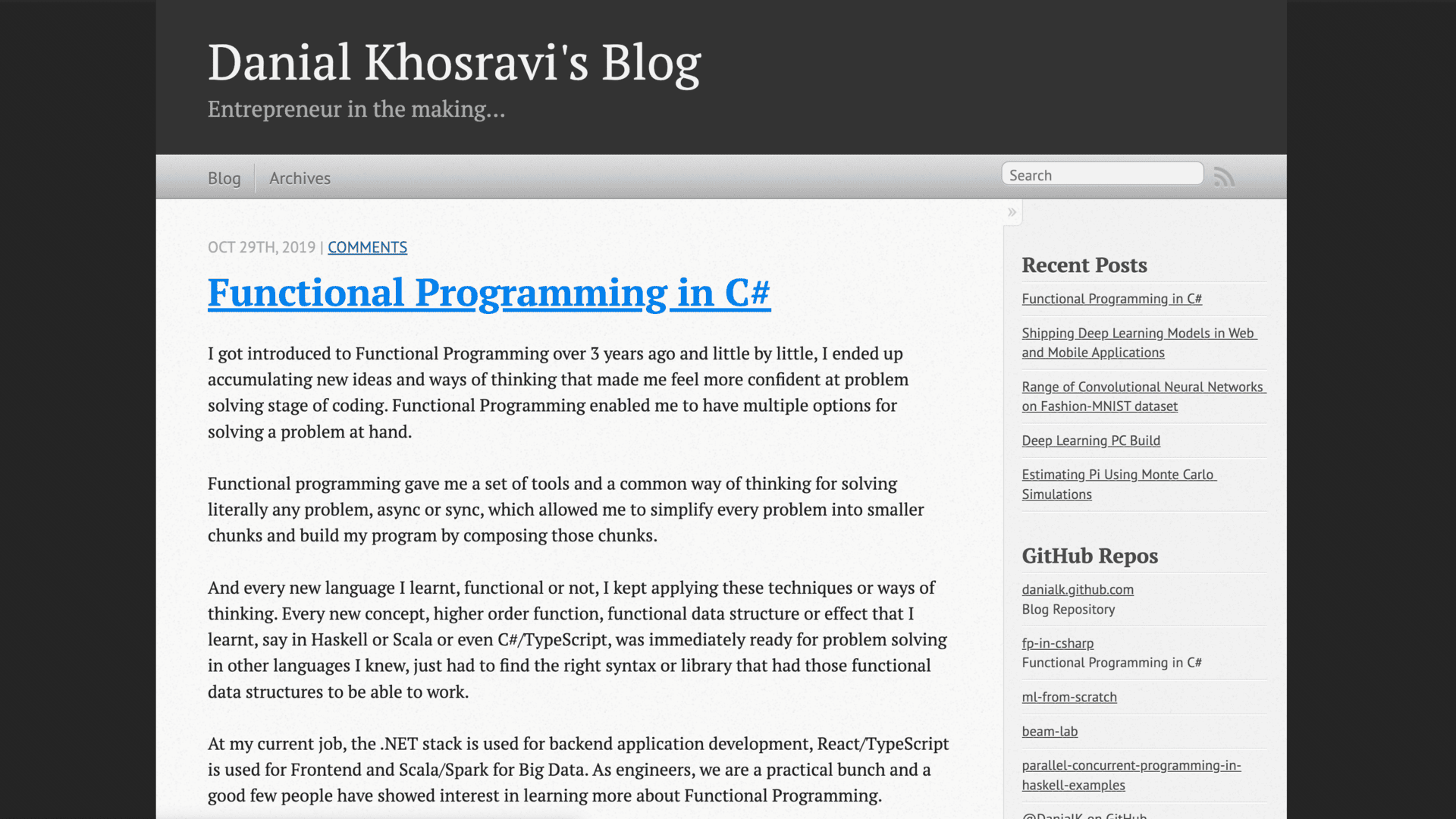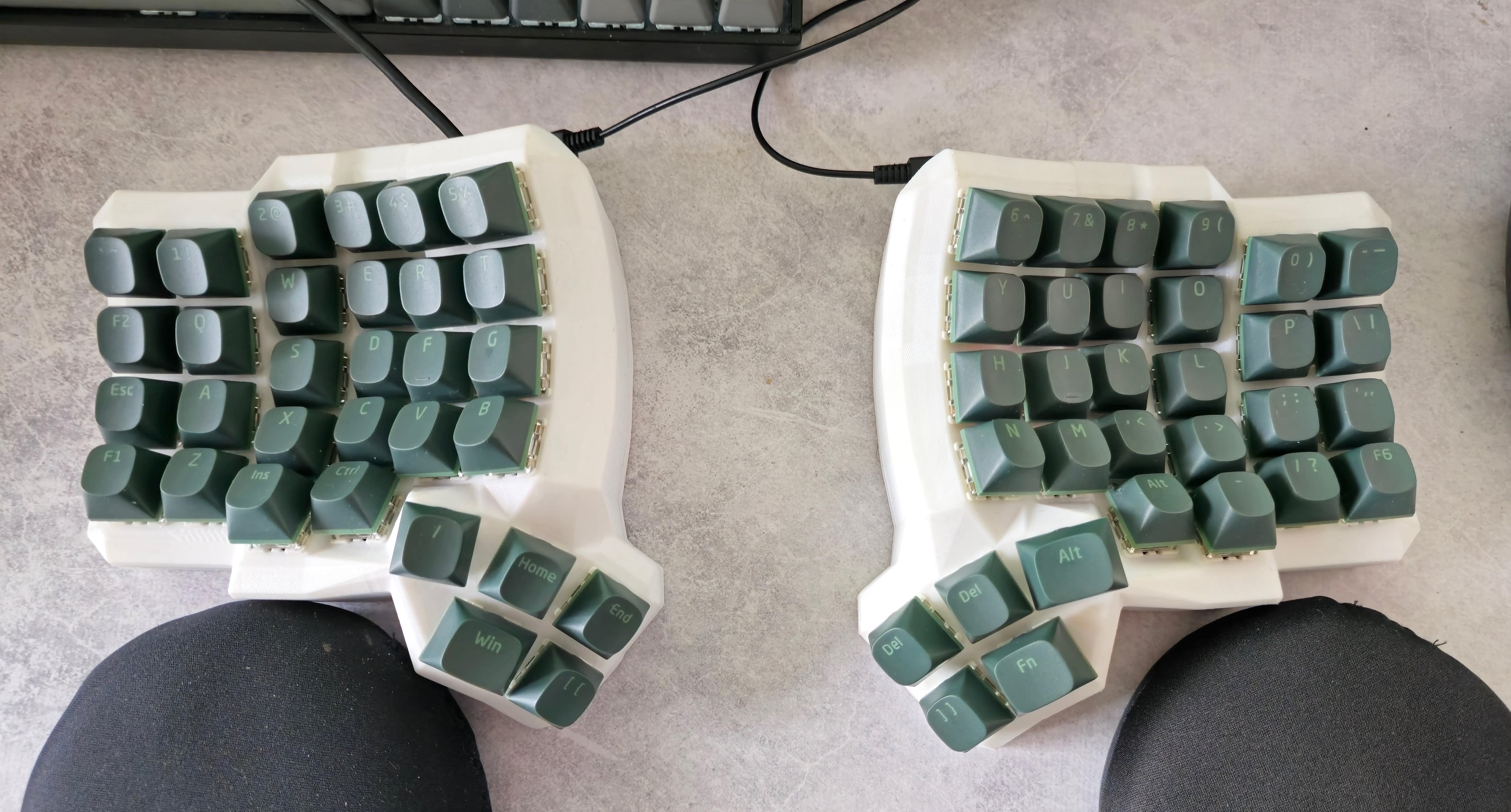Latest
- Published on
My blog has been gathering dust for the past 5 years as I've been spending more time on non-tech hobbies and have been busy with work, life and family.
Recently, I opened up my 11-year-old Octopress-based blog and, oh boy, it looked very outdated!!

So I thought it would be cool to migrate it to NextJS and take advantage of the static rendering capabilities of the framework.
- Published on
I got introduced to Functional Programming over 3 years ago and little by little, I ended up accumulating new ideas and ways of thinking that made me feel more confident at problem solving stage of coding. Functional Programming enabled me to have multiple options for solving a problem at hand.
- Published on
Web Application (running in your browser!)
IOS Application
Weekend project. Will be open sourced soonish !! #Sentimentanalysis #DeepLearning #ReactNative #MachineLearning #NLP pic.twitter.com/EyECl7waNF
— Danial (@DaniaL_KH) March 18, 2018- Published on
Fashion MNIST is a drop-in replacement for the very well known, machine learning hello world, MNIST dataset. It has same number of training and test examples and the images have the same 28x28 size and there are a total of 10 classes/labels, you can read more about the dataset here : Fashion-MNIST
In this post we will be trying out different models and compare their results:
List of models
- 2 Layer Neural Netwoek
- CNN with 1 Convolutional Layer
- CNN with 3 Convolutional Layers
- VGG Like Model
- VGG Like Model With Batchnorm
- Published on
Pi (3.141593) is one of the few magical numbers in Mathematics that we often trust, accept and use in our calculations. However, you might be curious to know where it comes from. Pi can be obtained analytically which gives us a value equal to 3.141593 but here we're going to find the value of pi numerically by running Monte Carlo simulations.
- Published on
According to Investopedia, Beta is a measure of the volatility, or systematic risk, of a security or a portfolio in comparison to the market as a whole. In this post, we're going to learn how to calculate beta coefficient of our desired stocks using historical price data that is publicly available.
Below we will be covering
- R script to calculate beta for Goldman Sachs
- Maths behind the beta coefficient
- Published on
In this post I want to introduce you to a great ggplot2 add-on, ggthemes. ggthemes which is freely available on github, let you turn your current plots to professional looking plots in a matter of a couple of lines of code.

